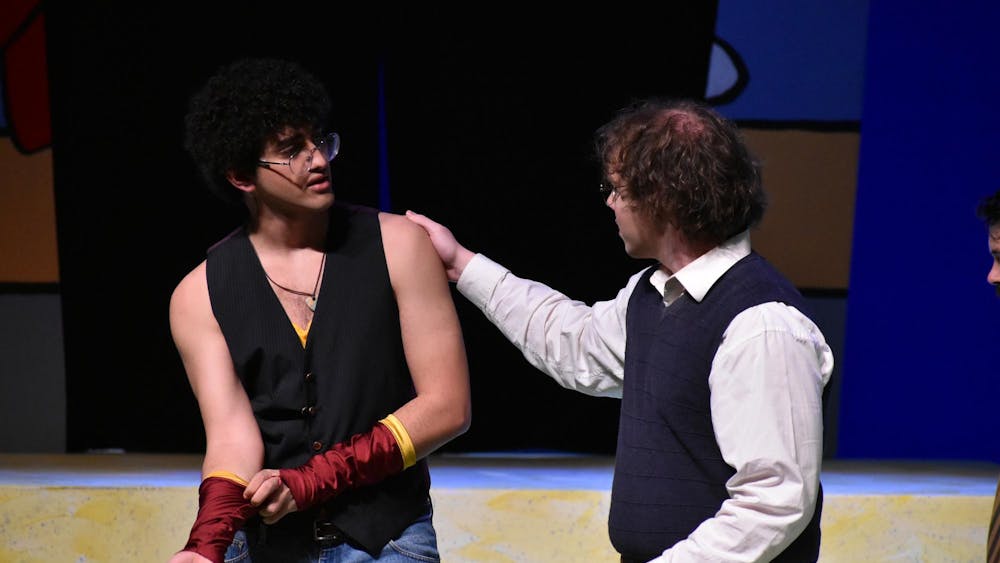Winter course registration opens Wednesday, Nov. 6, at Eastern Michigan University, so The Echo has rounded up five study abroad programs students can consider for the upcoming semester.
Each of these programs was selected due to the fact that they list and highlight traveling and staying in multiple locations, so students will see as much of the world as possible. More information on these programs and the multitude of other opportunities with Eastern’s Study Abroad and U.S. Travel Programs can be found by contacting the study abroad office @programs.abroad@emich.edu.
Mexico: The Route of Cortez
This is one of the most budget-friendly options in the Study Abroad and U.S. Travel Program. The Route of Cortez program focuses on experiencing the history of pre-columbian Mexico while being driven in a bus or van through important Mesoamerican cultural sites, including Teotihuacan, the home of the pyramid of the feathered serpent Quetzalcoatl.
Professor Bradley Ensor, who spends most of his time in Mexico on anthropological research, guides students for the week of spring break (Feb. 21- March 3). Ensor, who earned his doctorate degree at the University of Florida, teaches classes spanning archaeology, cultural anthropology, and bioarchaeology.
On the Mexico trip, in addition to visiting Ensor's research sites, he takes students to his favorite restaurants. The tuition covers those dinners, and other meals, as well as the costs of admission to sites, and housing. Outside of tuition, the estimated cost of the program is $2,300, which covers the program and application fees, airfare, and out-of-pocket expenses. Ensor has hosted the program many times with EMU, and the class counts as normal toward a degree.
Liberation of Paris
Some students might have seen this class in previous years under a slightly different title, because Professor Steven Ramold usually leads a program in Europe teaching the history of the first or second World War. Ramold, who earned his doctorate at the University of Nebraska-Lincoln, specializes in 19th century U.S. history, military history, and cultural history.
This year, Ramold modified his D-Day and the History of the Allied Invasion course so students could spend more time in Paris and learn about the occupation of the city, as well as the aftereffects of the invasion.
Of course, students will also visit the coasts of Normandy and see the beach and Normandy’s historic center in Bayeux where the allies began to shift the tides of the war. The trip takes students through Paris and Normandy over the course of the winter intersession, otherwise known as the week after finals. Students will see many of the battlefields and museums that have come to define our understanding of the conflict.
Literary Studies: London and Edinburgh
Another winter intersession course, Literary Studies Abroad in London and Edinburgh takes students to the United Kingdom. While there, students will learn about the literary history of not only England and Scotland but how they were shaped by the history of war and conquest in the former British Empire.
Led by Professors Craig Dionne and Meg Dobbins, students will visit the British Museum in London, Stratford upon-Avon where Shakespeare was reportedly born, and the Writers Museum in Edinburgh as well as a multitude of other activities. Built to give students not only the knowledge and history of writing but inspiration for how to construct their own literature, the course takes the week to expose students to as much as possible.
Dionne has a doctorate in literary and cultural theory from Carnegie Mellon University. Dobbins has a doctorate in English from Washington University in St. Louis.
Returning Home: Race, Identity, and Ghana and the Trans-Atlantic Slave Trade -
A newer program, Returning Home takes students to Ghana to study the long-reaching effects of the slave trade between Africa and the rest of the world. Led by Professor Caralee Jones-Obeng, the course allows students to learn about the history of Ghana during and after the “end” of the Trans-Atlantic slave trade, as the country was shaped by the African-Americans who wished to reconnect with their ancestral homelands through movements like Afrocentrism and Pan-Africanism.
This program takes students through the cities of Cape Town, Accra, and Kumasi in Ghana. Students will visit the Assin Manso Slave River where captured slaves were forced to wash in before their final voyage across the ocean could take place, as well as the Manhyia Palace Museum and other important historical sites as they conduct the 10-day long course.
Jones-Obeng has a doctorate in African American and African diaspora studies from Indiana University.
Spanish Language and Culture in Costa Rica -
The longest program on the list at a full month long (May 5-June 13). Spanish Language and Culture in Costa Rica is a language immersion course. In Costa Rica, students are expected to immerse themselves in the language of Costa Rica to increase their comprehension of Spanish and the culture of the region.
For Spanish majors, the course fulfills the 90-hour immersion requirement. The course is built to give students what a study abroad experience is meant to: an understanding of the world outside of themselves and their immediate surroundings. While in Costa Rica students will live and interact with locals as they increase their language capabilities and learn not only independence but how independence helps to understand empathy.
Anyone wondering about how to pay for a study abroad course should contact their department faculty advisor about scholarships, as most scholarships apply as normal to study abroad courses.
“Sometimes three people apply and three people get all the money. You just never know how many people you’re really competing with," said Kristen Krug-Shaffer, head of the Study Abroad Program at EMU.










